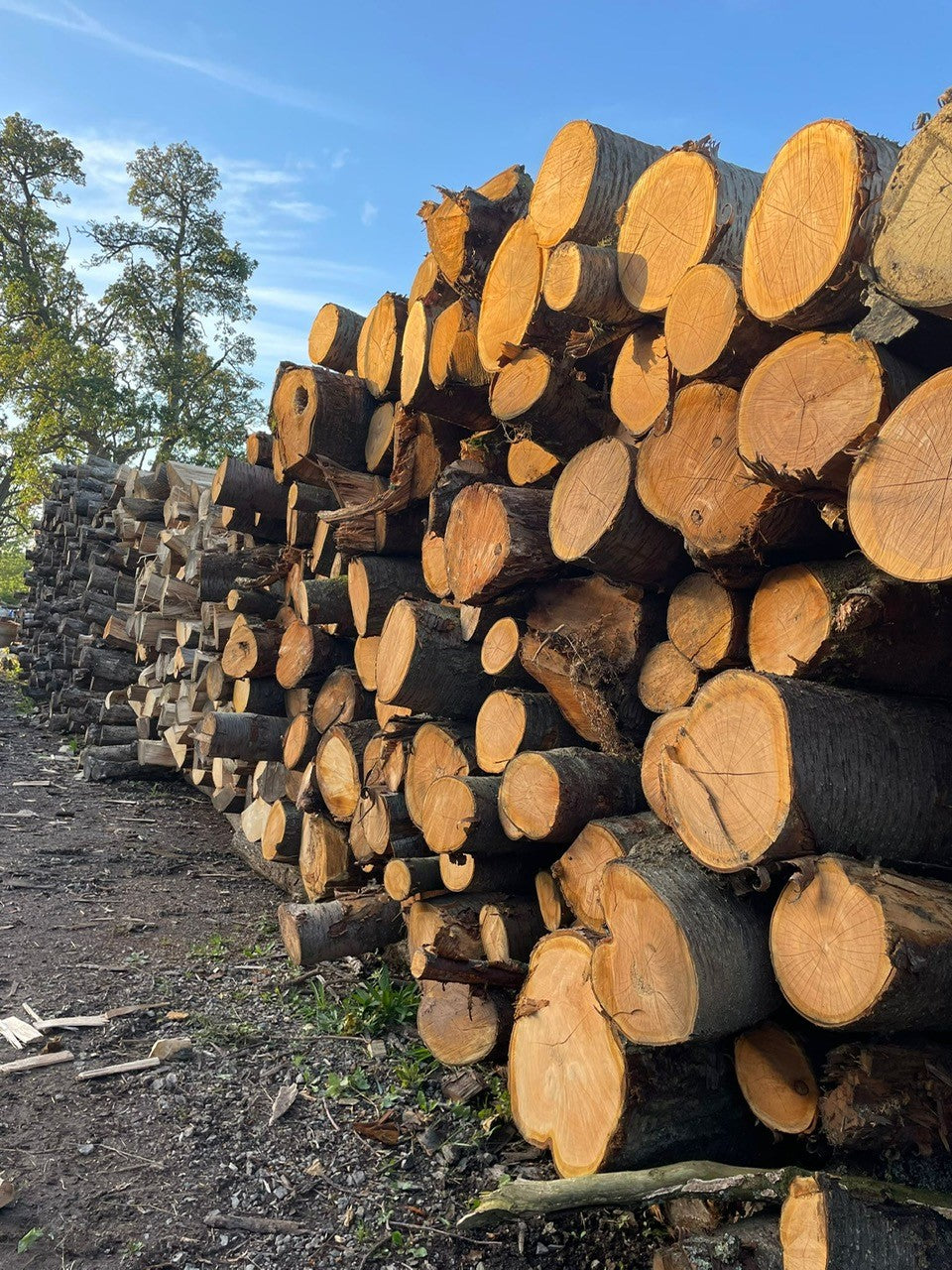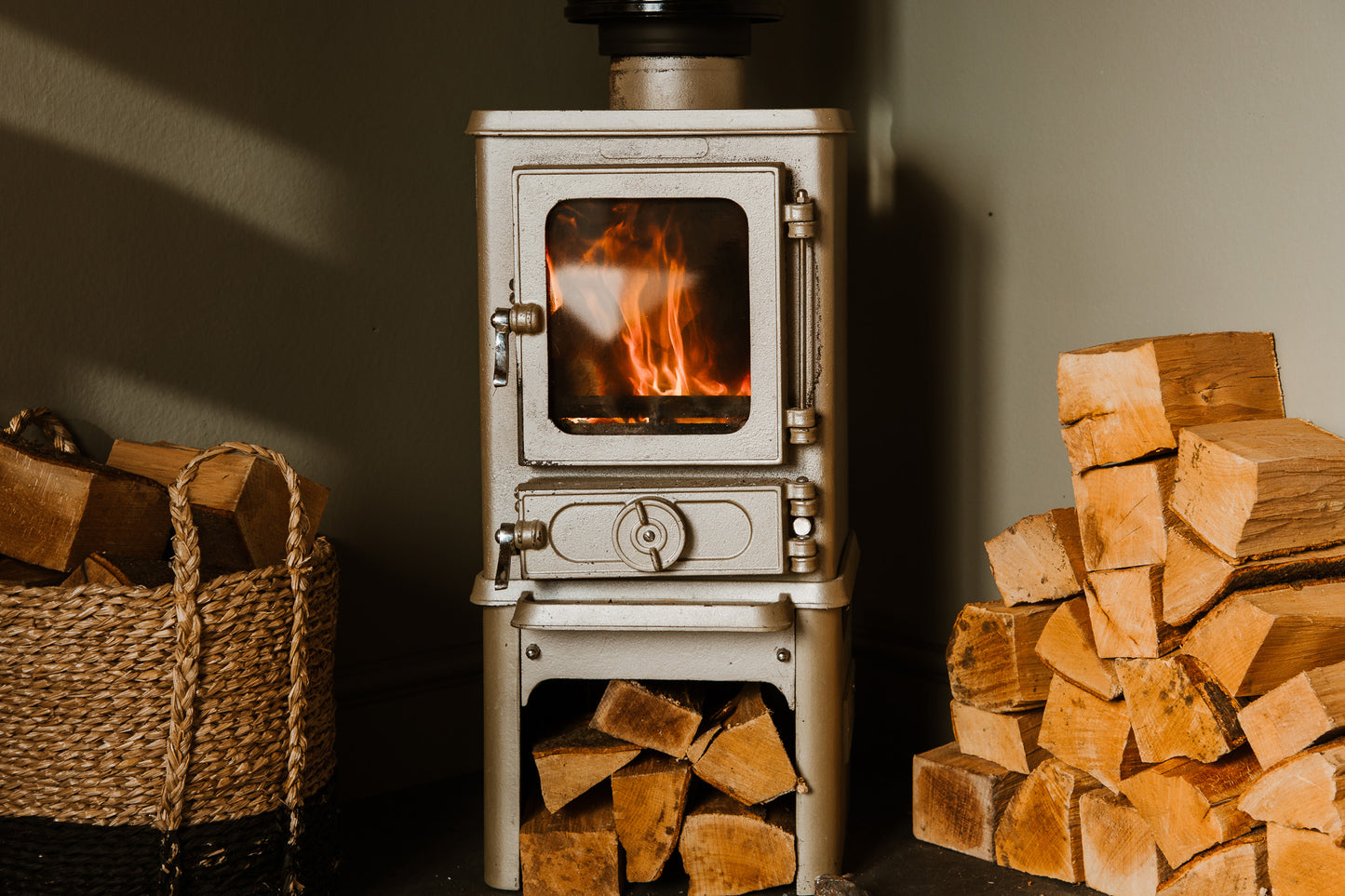

Love Logs was founded to offer a British alternative to the firewood industry's dirty secret of imported wood. Firewood doesn’t have to labelled as imported so we, along with most consumers, were shocked to find that over 50% of firewood and 90% of charcoal that we buy in the UK is imported.
We're going to look at how much firewood is imported and why, and why buying British wood is better!
How much firewood is imported?
In 2019, the UK was the second biggest net importer of forest products in the world. In 2020 we imported £7.5 billion worth of wood products, including 9.1 million tonnes of wood pellets.
Why do we import so much wood?
As with most things, the answer is usually cost. Imported wood can be a lot cheaper than British wood as the labour to cut and process it down to firewood costs less in Eastern Europe than it does in the UK.
Why buy British Wood?
1. British wood reduces road miles and CO2 emissions
The process of burning wood is carbon neutral throughout the tree’s lifetime, so the only carbon footprint comes from the road miles it travels to get to you.
Most imported wood sold in the UK comes from Eastern Europe meaning it needs to travel 1,500 – 3,000km to get to the UK , on top of the miles from the UK seller to your door.
Buying British wood minimises the miles travelled and the carbon emitted from the journey.
2. Be sure the wood you buy has come from sustainably managed forests
Sustainable forests are managed to simulate natural patterns of disturbance and regeneration, so carefully selected trees are removed for firewood to create temporary gaps in the tree cover that benefit the forest wildlife. Replacement trees are planted which balance out the carbon dioxide released by burning the felled trees, making the practice carbon neutral.
We have strict rules on managing woodland sustainably in the UK and our woodland cover is increasing annually so it looks like our efforts are working!
Unfortunately, the same can’t be said all over the world. For example, Estonia is currently suffering one of the highest rates of forest loss in Europe and the ‘UK is likely complicit’ in that due to our demand for imported wood.
That’s not to say that all imported wood you can buy is contributing to deforestation – but it’s worth checking where yours comes from and what the rules and practices are in that country.
3. Protect British Woodland from Imported Diseases
Our British ash trees are currently suffering an epidemic of ash dieback disease which is estimated to kill 80% of UK ash over the next 10 years and will cost our economy around £15billion.
Ash dieback is a fungal disease which was first found in Asia but is widely believed to have come to the UK via ash imported from infected areas of Europe until importing it was banned in 2012.
Reducing imports and buying British wood reduces the risk of other diseases being introduced to our ecosystem.
4. Avoid Import Fees and Delays Post-Brexit
Now that the UK has officially left the EU, anything being imported to the UK from the EU, including firewood, must go through a formal customs declaration before the goods can be cleared for entry. This additional paperwork takes time and if customs want to do any additional checks, the wood might be delayed at customs and stuck at the border for days or even weeks.
UK companies now also need to pay duty and VAT on their imports, which pushes the cost of the firewood up. Some companies have taken this hit but others are starting to raise the price of their wood and pass it onto you, the consumer.
When you buy British wood, it's not totally immune to price increases (we are in a cost of living crisis after all), but it won't be subject to these additional VAT and duty costs so the price is likely to be more stable.
How do you know if you’re buying British wood?
Companies who are selling British wood will shout about it! We’re proud to be reducing road miles and supporting British producers, and other companies are too.
Generally if a company is selling British wood, they will make it very clear on their website. Many British wood sellers have the Grown In Britain certification, but it’s not necessary to sell British wood.
Here’s a few tricks we’ve seen from companies selling imported wood (mentioning no names!)
- Saying they’re a ‘UK company’ doesn’t mean they source their products from the UK!
- Saying their products are ‘hand packed in the UK’ doesn’t mean they weren’t grown in Eastern Europe and imported before they were packed.
- Selling small amounts of British wood alongside large crates of imported wood. If a certain product isn't labelled as British, then it probably isn't!
If you aren’t sure, just ask your firewood supplier where their wood comes from and they should be happy to tell you!
When you buy wood from Love Logs, you're buying British firewood, kindling, firelighters, charcoal and cooking wood unless we specifically state otherwise on the product page.
Found this useful?
We'd love it if you shared it with your fellow log burner enthusiasts!




